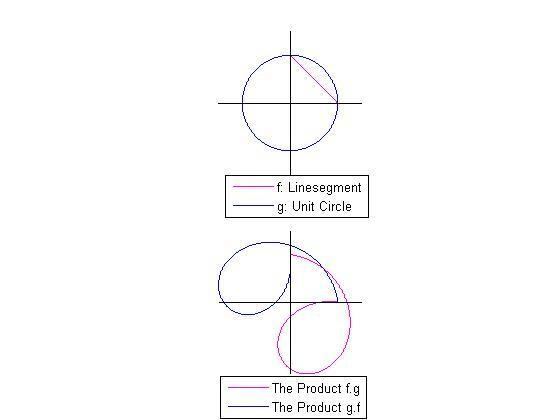 | ||
Any vector space can be made into a unital associative algebra, called functional-theoretic algebra, by defining products in terms of two linear functionals. In general, it is a non-commutative algebra. It becomes commutative when the two functionals are the same.
Contents
Definition
Let AF be a vector space over a field F, and let L1 and L2 be two linear functionals on AF with the property L1(e) = L2(e) = 1F for some e in AF. We define multiplication of two elements x, y in AF by
It can be verified that the above multiplication is associative and that e is the identity of this multiplication.
So, AF forms an associative algebra with unit e and is called a functional theoretic algebra(FTA).
Suppose the two linear functionals L1 and L2 are the same, say L. Then AF becomes a commutative algebra with multiplication defined by
Example
X is a nonempty set and F a field. FX is the set of functions from X to F.
If f, g are in FX, x in X and α in F, then define
and
With addition and scalar multiplication defined as this, FX is a vector space over F.
Now, fix two elements a, b in X and define a function e from X to F by e(x) = 1F for all x in X.
Define L1 and L2 from FX to F by L1(f) = f(a) and L2(f) = f(b).
Then L1 and L2 are two linear functionals on FX such that L1(e)= L2(e)= 1F For f, g in FX define
Then FX becomes a non-commutative function algebra with the function e as the identity of multiplication.
Note that
FTA of Curves in the Complex Plane
Let C denote the field of Complex numbers. A continuous function γ from the closed interval [0, 1] of real numbers to the field C is called a curve. The complex numbers γ(0) and γ(1) are, respectively, the initial and terminal points of the curve. If they coincide, the curve is called a loop. The set V[0, 1] of all the curves is a vector space over C.
We can make this vector space of curves into an algebra by defining multiplication as above. Choosing
Then, V[0, 1] is a non-commutative algebra with e as the unity.
We illustrate this with an example.
Example of f-Product of Curves
Let us take (1) the line segment joining the points (1, 0) and (0, 1) and (2) the unit circle with center at the origin. As curves in V[0, 1], their equations can be obtained as
Since
Now, we get two f-products
and
See the Figure.
Observe that
